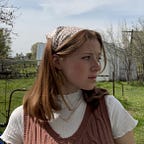pretty privilage is part of the survival of the fittest
“If you crush a cockroach, you’re a hero. If you crush a beautiful butterfly, you’re a villain. Morals have aesthetic criteria.” — Friedrich Nietzsche
Morals have aesthetic criteria.
There has been a lot of disruption over this quote regarding the truth it may hold or if it has anything to genuinely back it up. I think to truly analyze its meaning, we have to look at it from multiple sides.
The first being in defense of killing the cockroach and admiring the butterfly.
Humans are known to have preference on aesthetics. Why subject yourself to an unattractive environment when you could enjoy your sights? It’s a viable question and one that is difficult to blame. After all, you kill a cockroach because it invaded your home; you admire a butterfly because it stayed in your flowers. This begs the question on whether you can truly compare these two insects in the first place.
If you were to switch roles, and the cockroach was in your garden and the butterfly was in your house, I truly don’t think you would treat the butterfly the same as you would treat the cockroach. No. You’d leave your window open to allow it to find its way out of your house on its own. You may even hope it sticks around a little longer. Inversely, if you see a cockroach outside, I believe you may still be inclined to kill it, simply for its appearance.
Study shows being unattractive leads people to believe you’re less qualified
It sounds horrible. The fact that humans could be so distracted by physical qualities that they doubt your cognitive ability to be as qualified as someone who is conventionally attractive seems like something from a sitcom or a dream.
A study from the University of Melbourne was conducted lead by Christoph Klebl indicating that humans inherit an internal bias towards the less attractive beings.
“We presented viewers with photographs of attractive and unattractive faces and asked them to judge their characters. The photographs were taken from a face database which provided average attractiveness ratings for a wide range of faces. We selected face pairs that differed in their perceived attractiveness but who had the same race and gender. As expected, we found that people perceive unattractive individuals more negatively than attractive individuals and that this effect was stronger for judgments of moral character traits such as trustworthiness, honesty, or selflessness, than for judgments of non-moral traits such as being funny or organized (which were equivalent on the degree to which the traits were perceived as warm). Thus, physical attractiveness influences our perceptions of others more fundamentally than previously understood.” (Klebl, 2022)
Klebl states later on that it has to do with the defense system within our bodies. Seeing something that we may believe could be disfigured or doesn;t fit the norm, activates our emotion of disgust. In return, this motivated humans to physically avoid objects or personages like a disease.
This begs the question: how can the butterfly and the cockroach both survive?
The simple answer would be that every living thing deserves to live.
Not only do they deserve to live, they deserve to want to live. I think the distinction is important. Physical appearance is a fraction of what a human can offer this world. Even if there is nothing of value a human can bring. If our so-called “worth” is at 0.1% it does not matter. We do not owe rent to live in this world. Our appearance is not our payments and our personalities are not our bills. It really is that simple. Our heartbeats are the only thing we owe the people. That ability to try and be tried.
Regardless of appearance, or what we think the value they bring into the world is. Internal bias can be fought and as humans it is our moral obligation to do so. Beauty is subjective like so many things. A cockroach in your house deserves to have a window opened for them.
A last piece of literature I want to share with you. It’s a poem by Bao Phi called, “Not a Silverfish.”
“A large centipede was in my tub for days.
It looked like a prehistoric zipper made of needles.
A firecracker with too many fuses.
I skipped taking a shower for far too long —
an unspoken compromise — hoping
it would disappear on its own,
preferring to be dirty over drowning my fear.
Eventually I trapped it in a container,
took it outside while it scrambled
like an explosion of exclamation points
in the foggy plastic,
and let it go.
These centipedes are often mistaken for silverfish —
they actually make dinner of them
and other more damaging pests.
I know what it’s like to be mistaken for something else,
to feel that the first reaction when a new set of eyes encounters your body
is to want to smash you.
To wonder what in history made a caterpillar a caterpillar,
a ladybug a ladybug.
To know what it’s like to be invisible until revealed to be ugly,
alien thing, hairy wiggle
whose body tells the only story
anyone is willing to hear.
When it shook free of my trap,
its head made of stepladders,
its body a spasm of a hundred loose threads of fate,
it didn’t make a sound but I swear
I could hear it scream that it wanted
to travel to prehistory
and rewrite the many veins of possibility
that would shape how it would be seen
so that the present could be a place
where it could be
understood for what
it was.”
